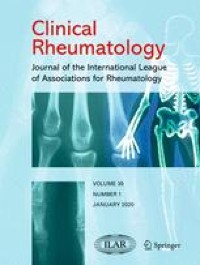Abstract
Rheumatoid arthritis (RA) is a chronic autoimmune inflammatory disease affecting not only the synovial joints but also multiple extra-articular sites, including ankle and foot soft tissue. Hindfoot abnormalities usually follow those in the forefoot, with up to 4 out of 10 patients experiencing talalgia during their disease course. Enthesophytosis, retrocalcaneal bursitis, and plantar fasciitis are among the most common etiologies, while heel fat pad abnormalities like subcalcaneal bursitis are rare. Here, we report two cases of subcalcaneal bursitis, and the first case of heel fat pad and subcalcaneal bursa herniation in patients with established RA, along with a comprehensive literature review of subcalcaneal bursitis and other heel fat pad abnormalities in RA. Subcalcaneal bursitis, also referred to as panniculitis, inflammatory-edematous lesion, or adventitial (adventitious) bursitis has been reported in up to 10% of patients with RA. It appears as a compressi ble, heterogeneous, and hypoechoic subcalcaneal mass on ultrasound (US), with peripheral vascularization on Doppler US. Patients may present with heel discomfort. Ultrasonographic assessment is usually sufficient to confirm the presence of heel fat pad pathologies. Rest, analgesics, and mechanical aids with or without addition of disease-modifying antirheumatic drugs are usually employed, while intervention is rarely required.



No comments:
Post a Comment